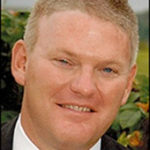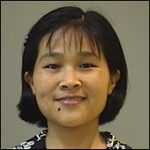Center aims to advance the understanding of physical mechanisms responsible for radiation-induced effects on emerging technologies
The Institute for Space and Defense Electronics at Vanderbilt University has been selected as the Center of Excellence in Radiation Effects by the U.S. Air Force Office of Scientific Research and the Air Force Research Lab. The $5 million, five-year program will be led by Vanderbilt in partnership with The Ohio State University and the University of California at Santa Barbara.
The goal is to develop tools, experimental techniques, theoretical understanding, and models that can be applied to multiple emerging technologies that will be integral to advanced satellite systems, GPS navigation, remote sensing, communications, and other electronics applications.
The capabilities developed through the center will contribute to a wide range of Department of Defense programs and systems. The DOD currently funds work on many electronic and photonic systems that have the potential to provide dramatic improvements in space microelectronics, but little is known about how these new systems will perform or survive in extreme environments, particularly those with significant radiation requirements.
The work conducted as part of the COE will raise the level of understanding of radiation effects in emerging materials and device structures and develop new models and radiation-effects characterization methods for next-generation silicon-based, silicon-derived, and compound-semiconductor technologies.

“The Vanderbilt-Ohio State-UCSB team has a long history of technical collaboration through several DOD Multidisciplinary University Research Initiatives specifically focused on radiation effects in electronics, and through related projects,” said Principal Investigator Ronald Schrimpf, ISDE director and Orrin H. Ingram Professor of Engineering. “This team also has ongoing technical relationships with researchers in Air Force laboratories that will be expanded to take advantage of COE resources.”
The Vanderbilt team has extensive experience in all aspects of radiation effects, from the atomic scale through system-level effects, with particular expertise in connecting experiments to radiation-enabled models. Co-PIs are ISDE Associate Director and Research Professor of Electrical Engineering Michael Alles, Daniel Fleetwood, Olin H. Landreth Professor of Engineering; Sokrates Pantelides, William A. and Nancy F. McMinn Professor of Physics and University Distinguished Professor of Physics and Engineering; Robert Reed, professor of engineering and associate chair of the Department of Electrical and Computer Engineering; and Enxia Zhang, research associate professor of electrical engineering and materials science and engineering. The Vanderbilt team also will include graduate and undergraduate students.

Vanderbilt provides its expertise in a broad range of radiation-effects technical areas and will work with OSU, UCSB, Air Force collaborators, and external partners on technologies of interest to DOD stakeholders. Experimental samples will be provided by UCSB, OSU, and various external partners. Workforce development, education, and training will be an overarching theme of the COE and will involve all program participants.
Alles will coordinate the workforce development-related activities and COE management responsibilities at Vanderbilt. “This new center provides an excellent opportunity to support workforce needs through engagement of students in research projects and to expand the knowledge of existing scientists and engineers in the area of radiation effects in electronics,” Alles said.
“We are particularly interested in engagement of undergraduate students leveraging synergy with the DOD-sponsored SCALE program, as well as recruiting graduate students from undergraduate-only institutions and HBCUs,” Alles said. “Overall efforts will include opportunities for students to participate in internships at Air Force research facilities.”

Zhang will coordinate experimental efforts to evaluate the radiation response of advanced materials. These will include student-led studies of the basic mechanisms of radiation effects on microelectronics, defects in microelectronic devices and materials, and low-frequency noise. “Students will need to learn basic concepts of engineering, materials science, and physics and build up a wide variety of laboratory skills to be able to perform the necessary experiments. This will prepare students well for careers in many different areas of aerospace, defense, and microelectronics,” Zhang said.

“Quantitative characterization of the critical defects that limit the performance, reliability, and radiation response is essential for to advance the state of the art of these technologies. These efforts will be critical for the development and validation of theoretical and computational models of device and circuit radiation response,” Fleetwood said.
“A multi-scale approach is required to manage the complexity associated with microelectronics radiation response and provide insight at each length scale and level of abstraction,” said Reed.
 “While simulation and modeling methodologies exist, significant extensions of underlying physical models and, in some cases, development of completely new models and methods are needed to understand radiation effects in the new material systems and device architectures that are relevant for future DOD systems,” Reed said.
“While simulation and modeling methodologies exist, significant extensions of underlying physical models and, in some cases, development of completely new models and methods are needed to understand radiation effects in the new material systems and device architectures that are relevant for future DOD systems,” Reed said.
Pantelides will be responsible for the center’s theoretical component at the atomic scale and connections to engineering-level models for device degradation.

“The physics of the atomic-scale dynamics that underlies defect-mediated radiation-induced device degradation, in conjunction with experimental data, is a vital component of the multiscale approach, especially defect identification and engineering-level modeling. Students and post-docs will be trained on the bridge between physics and engineering,” Pantelides said.
The work conducted through the Center of Excellence is critical to ensure the necessary performance, reliability, and survivability of next-generation technologies for military and space systems, to address existing workforce shortages, and to produce the next generation of radiation-effects experts, Schrimpf said.
The research is supported by the Air Force Office of Scientific Research Grant No. FA9550-22-1-0012.
Contact: Brenda Ellis, 615 343-6314
brenda.ellis@vanderbilt.edu